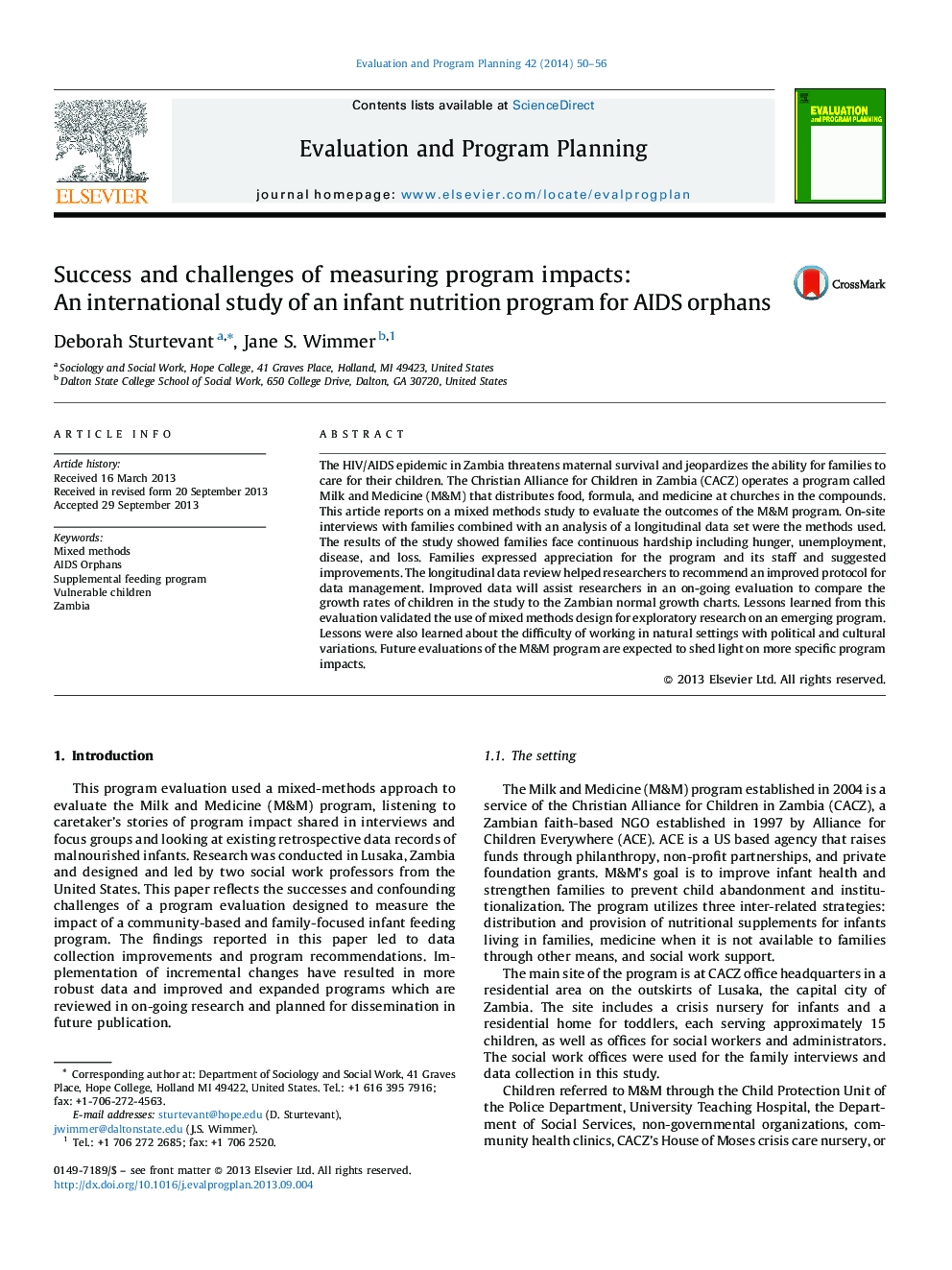| کد مقاله | کد نشریه | سال انتشار | مقاله انگلیسی | نسخه تمام متن |
|---|---|---|---|---|
| 321358 | 539785 | 2014 | 7 صفحه PDF | دانلود رایگان |
• The collection of data needed to include more reliable data including birth dates, date at admission, attendance, and monthly weights.
• As a group, children gained weight over time the program, but their average weights continued to be below the median weights for normal growth charts.
• Three themes emerged from the interviews: poverty, parental death or limitation, and specific unmet needs for families/caretakers.
• Unmet needs for families/caretakers included extreme poverty insufficient food and nutrition for families, unemployment, illness and death.
• Families and caretakers were thankful for the Milk and Medicine program and its staff and credited it in some cases with the survival of the children in their care.
The HIV/AIDS epidemic in Zambia threatens maternal survival and jeopardizes the ability for families to care for their children. The Christian Alliance for Children in Zambia (CACZ) operates a program called Milk and Medicine (M&M) that distributes food, formula, and medicine at churches in the compounds. This article reports on a mixed methods study to evaluate the outcomes of the M&M program. On-site interviews with families combined with an analysis of a longitudinal data set were the methods used. The results of the study showed families face continuous hardship including hunger, unemployment, disease, and loss. Families expressed appreciation for the program and its staff and suggested improvements. The longitudinal data review helped researchers to recommend an improved protocol for data management. Improved data will assist researchers in an on-going evaluation to compare the growth rates of children in the study to the Zambian normal growth charts. Lessons learned from this evaluation validated the use of mixed methods design for exploratory research on an emerging program. Lessons were also learned about the difficulty of working in natural settings with political and cultural variations. Future evaluations of the M&M program are expected to shed light on more specific program impacts.
Journal: Evaluation and Program Planning - Volume 42, February 2014, Pages 50–56
